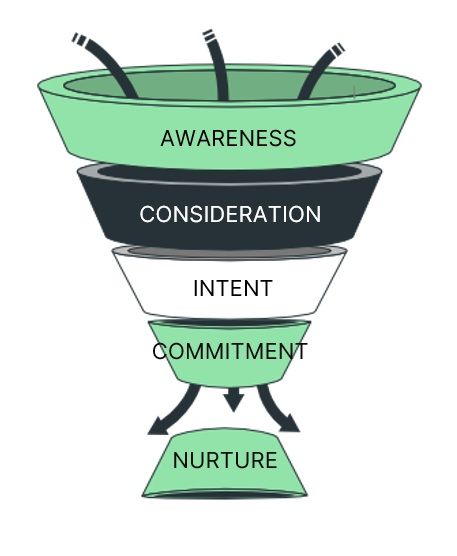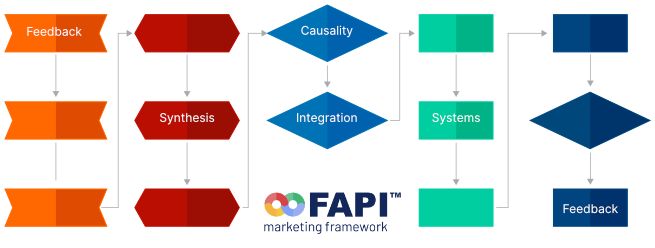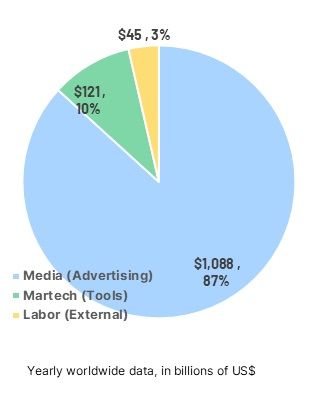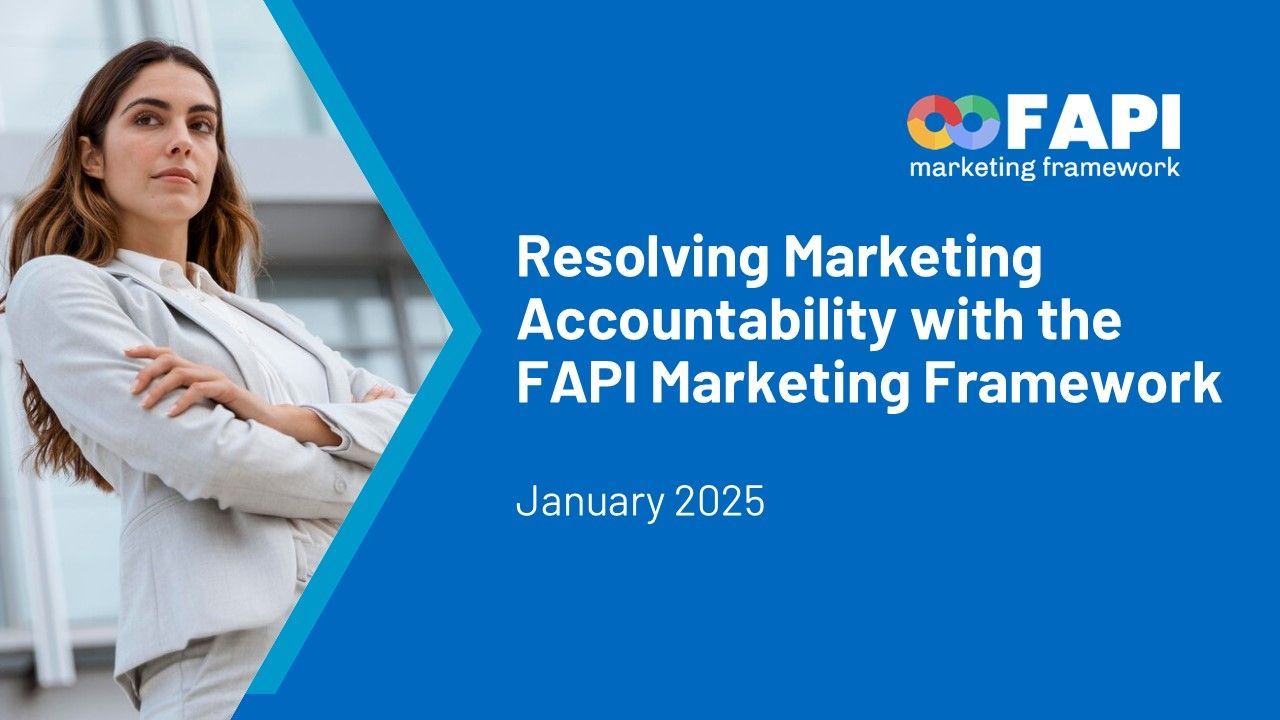By Chasefive Management
•
February 19, 2025
Marketing departments worldwide allocate their budgets strategically across three major cost categories: Media (Advertising), Tools (Martech), and Labor (External Resources like Freelancers and Contractors). The latest data, expressed in billions of dollars, provides insight into how businesses prioritize their marketing investments. Marketing Budget Allocation Overview The global marketing spend is distributed as follows: Media (Advertising): $1,088 billion (87%) Tools (Martech Software & Platforms): $121 billion (10%) Labor (Freelancers & Contractors): $45 billion (3%) This breakdown reveals a strong emphasis on paid media as the dominant marketing expenditure, with a notable portion allocated to marketing technology (Martech) tools, while external human resources remain a smaller but significant component of marketing budgets . Key Insights from the Data 1. Media (Advertising) Takes the Lion’s Share (87%) Advertising continues to be the largest cost item, accounting for nearly nine out of every ten dollars spent on marketing. Businesses rely heavily on paid media channels, including: Digital Advertising (Google Ads, Social Media Ads, Display Networks, and Programmatic Buying) Traditional Advertising (TV, Radio, Print, and Outdoor Media) Influencer and Sponsorship Campaigns The sheer dominance of media spend highlights the industry’s dependence on customer acquisition and brand awareness campaigns, fueled by digital transformation and the increasing role of online advertising in global markets. 2. Martech Tools Account for 10% of Spending Marketing technology, or Martech, has emerged as a critical enabler of modern marketing strategies. At $121 billion, Martech spend includes: Customer Relationship Management (CRM) Software Marketing Automation Platforms (e.g., HubSpot, Marketo, Salesforce) SEO, Analytics, and AI-driven Personalization Tools Email and Content Marketing Software The Martech investment reflects the growing need for data-driven decision-making, with companies focusing on automation, personalization, and efficiency in customer engagement. 3. External Labor (Freelancers & Contractors) Remains a Small but Strategic Component (3%) Despite the rise of freelancers, gig workers, and marketing contractors, spending on external labor accounts for just $45 billion globally. This category includes: Freelance Copywriters, Designers, and Developers Performance Marketing Consultants SEO & PPC Specialists Fractional CMOs and External Strategy Advisors Many companies leverage contractors for specialized projects, particularly in content marketing, SEO, and campaign execution, rather than hiring full-time employees. The 3% allocation suggests that while outsourcing is a cost-effective approach, most companies still rely on in-house teams and agency partnerships for execution. Trends Shaping Marketing Spend in 2024 and Beyond 1. Shift Toward Performance-Based Media Spend With advertising accounting for the majority of budgets, there is increasing pressure on ROI-driven ad spending. Companies are moving toward performance marketing strategies , where every dollar spent is measured against direct business impact (leads, conversions, and revenue growth). 2. Martech Investments in AI and Automation As Martech tools continue to evolve with AI and machine learning, companies are prioritizing platforms that streamline workflows, improve targeting, and enhance customer experiences. Expect Martech’s share to grow as businesses seek efficiency through predictive analytics, chatbots, and AI-driven personalization. 3. Growth in Freelance & Fractional Roles While external labor spending remains relatively low, the rise of fractional CMOs, freelance growth marketers, and contract-based specialists is changing how companies approach talent. Businesses are embracing flexible workforce models, particularly for highly specialized skills in digital and performance marketing. How Companies Can Optimize Their Marketing Budgets Given the current spending distribution, marketing leaders must: Ensure media spend is performance-driven, prioritizing ROI and customer acquisition cost (CAC) management. Leverage Martech strategically, investing in automation, AI, and data analytics for efficiency. Balance in-house and outsourced expertise, using freelancers and contractors for specialized, cost-effective execution without unnecessary overhead costs. The marketing landscape is evolving, and agility in budget allocation will define competitive advantage in the years ahead. Would you like a more detailed industry-specific breakdown or recommendations based on company size? 🚀







